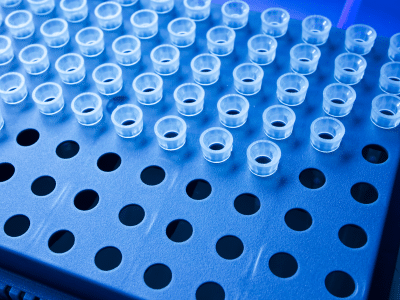Swab sampling is a critical phase in the diagnostic process
LABELIANS has been working with the COPAN brand since its founding, which has been developing swab sampling solutions for over 40 years.
COPAN expertise is recognised in many fields such as clinical diagnostics, industry and genomics (forensic), with a wide range of applications such as :
- Respiratory, gastrointestinal and skin infection detection
- Microbial resistance to antibiotics diagnosis
- Automation
- Self-sampling (salivary, urinary, vaginal)
- Genetics
- Crime scenes
- Surface controls
Choosing a COPAN swab means choosing a brand that is constantly innovating in the search for safer, more efficient and less invasive solutions for the patient. In this way, we enable the patient to be cared for in the shortest possible time. This is our positive impact on the diagnostic process.
How to select the right swab ?
Pour sélectionner l’ecouvillon adapté à votre application, il est indispensable de savoir :
- Quel micro-organisme vous recherchez : bactéries aérobie, bactérie anaérobie, virus
- Quelles analyses vous allez réaliser : culture, technique de biologie moléculaire
- Quel est le site de prélèvement : nez, bouche, urètre, vagin…
- Quel est le délai entre le prélèvement et l’analyse ?
To select the swab that will be well fitting your needs and adapted to your application, you need to know:
- Which micro organism you look for : anaerobic bacteria, virus
- Which analysis you need to run: culture, molecular biology technique
- What is the collection site: nose, mouth, urethra, vagina…
- What is the timelapse between sampling and analysis ?
If transport time does not exceed 5 hours
For a short time transport, the traditioonnal CLASSIQSwabsTM is recommended.
The nozzle type depends from collection site type. For instance, for standard easy-to-reach collection sites such as throat, skin, vagina, or a wound, a rigid plastic stick is recommended.
For thinner and deeper collection sites such as eyes, noze, throat, urethra, or pediatric sites, thin aluminium sticks are recommended Finally, for nasopharyngeal samples, it is necessary to use very fine and flexible twisted aluminium rods.
Beware, wooden swabs have an inhibiting and toxic action on germs and are therefore to be avoided (Source Rémic). For optimal sample recovery, COPAN offers FLOQSwabsTM flocked swabs with an anatomical design.
They allow absorption by capillary action


By comparison, on the same sampling site, a standard swab gives an average recovery of 18.9µl compared to 104.8µl for a flocked swab.
If transport time exceeds 5 hours :
For longer transport times, swabs with transport medium are recommended.
The traditional range allows transport for a maximum of 24 hours.
The LBMTM range allows transport for up to 48 hours.
In addition, this range allows direct automation of samples thanks to its standardised formats, thus reducing sample processing time (Dimensions: 13x80mm and 16x100mm).
The FLOQSwabs have a break-off feature which allows the tip to be broken off after sampling, thus preserving the sample in its entirety with the medium.
When testing for bacteria with a traditional swab, it is recommended that it be combined with Amies or Stuart medium, gel or liquid.
For a better recovery of the sample, this research is carried out with a flocked swab associated with the eSwabTM medium (modified Amies medium) with the LBMTM range.


For the detection of viruses with a traditional swab, it is recommended to combine it with the LSM medium.
Still with the objective of performance, this search for viruses, Chlamydia, mycoplasma or ureaplasma is carried out with a flocked LBMTM swab containing the UTMTM medium.
![]()

For molecular biology techniques such as PCR (Polymerase Chain Reaction), it is recommended to use the eSwabTM and UTM ranges:
The eSwabTM range allows the culture of bacteria and the performance of PCR for bacteria and viruses
The UTMTM range allows the culture of viruses and also the performance of PCR for bacteria and viruses
These ranges contain cryoprotectants that allow freezing at -70°C.
In order to stabilise the RNA and DNA of viruses, bacteria, Chlamydia, Trichomonas vaginalis, Mycroplasma and human DNA, it is recommended to choose the eNATTM medium which allows a safe handling thanks to the inactivation of the microbial viability.
Please note that this range cannot be used for culture, only for molecular biology techniques.

For molecular biology techniques such as PCR (Polymerase Chain Reaction), it is recommended to use the eSwabTM and UTM ranges:
The eSwabTM range allows the culture of bacteria and the performance of PCR for bacteria and viruses
The UTMTM range allows the culture of viruses and also the performance of PCR for bacteria and viruses
These ranges contain cryoprotectants that allow freezing at -70°C. In order to stabilise the RNA and DNA of viruses, bacteria, Chlamydia, Trichomonas vaginalis, Mycroplasma and human DNA, it is recommended to choose the eNATTM medium which allows a safe handling thanks to the inactivation of the microbial viability.
Please note that this range cannot be used for culture, only for molecular biology techniques.
The COPAN range is very wide and also includes technical solutions for surface sampling with the SRKTM range (Swab-Tinse-Kit) which contains SRK medium and disinfectant neutralising agents used for surface maintenance.
COPAN also offers swabs for genealogy and crime scenes:
Copan regularly innovates and has introduced new ranges of DNA and RNA free swabs for genome studies.
They are developing ranges for genealogy research, but also a range dedicated to crime scenes.
In a future article, we will introduce a new range dedicated to autosampling which is also at the heart of the innovation.
We have tried to be clear, but if you need more information, you know that we are always at your disposal.




